#avant-garde book design
Photo

From: Konstantin Biebl, S lodí jež dováží čaj a kávu, Art/Design/Typography by Karel Teige, Odeon, Praha, 1928 [MoA-g SA – The Museum of Avant-garde, Mendrisio Borgo
#graphic design#typography#art#poetry#geometry#letterpress#book#karel teige#konstantin biebl#the museum of avant garde#1920s
99 notes
·
View notes
Text
Pierre Bonnard - Le "prophète" de post-impressionnistes
Le texte ci-dessous est l’extrait du livre Bonnard (ISBN: 9781781608319) écrit par Nathalia Brodskaya, publié par Parkstone International.
<< J’espère que ma peinture tiendra, sans craquelures. Je voudrais arriver devant les jeunes peintres de l’an 2000 avec des ailes de papillon. >>– Bonnard à Matisse
Pour en savoir plus sur Bonnard et les Nabis, cliquez ici.
En octobre 1947, le musée de…

View On WordPress
#Art#avant-garde#Bonnard#book#Décoratif#Denis#design#ebook#Famille#français#Impressionnisme#Jardin#kindle book#La Réussite#La Symphonie pastorale#Les Frères Bernheim-Jeune#Les Nabis#livre#livre Kindle#Matisse#Misia#Nabis#Parkstone#Parkstone International#Paysages#peintre français#peinture#peinture à l&039;huile#Pierre Bonnard#portraits
1 note
·
View note
Text
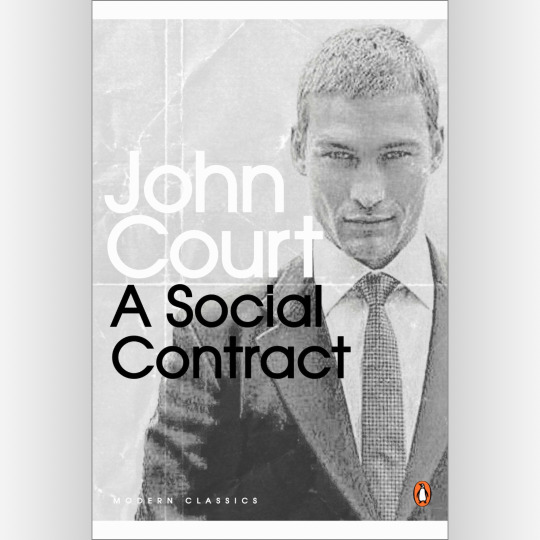
A Social Contract - John Court; Penguin Modern Classics.
Mock up cover of an imagined reprint of the 1973 novel by John Court (writing as Nick Stone). In the tradition of other books in that series such as On the Road etc
The 1973 book would have been a pulp novel, much like Richard Allen’s infamous ‘Skinhead’ series from New English Library.
The design is modelled strongly from the Penguin Modern Classics design, using ITC Avant Garde Gothic with a thin border to approximate the original font.
The cover image is adapted from a fashion shoot with the late Andy Whitfield who starred in Spartacus: Blood and Sand until his tragic death in 2011 from non-Hodgkin lymphoma.
#penguin modern classics#book cover#book cover design#andy whitfield#fake book cover#a social contract#ITC Avant Garde Gothic
1 note
·
View note
Text

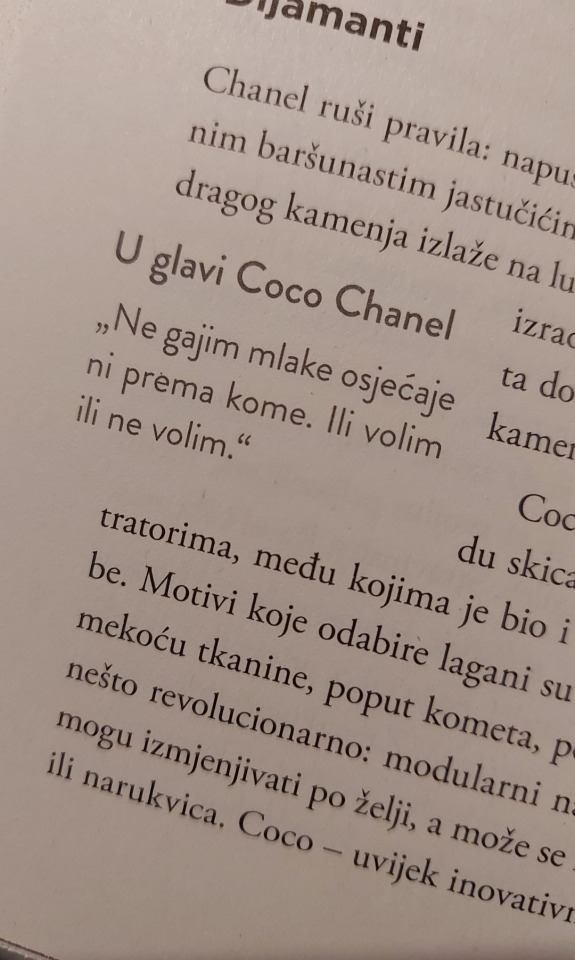
62/365
"Kada izgradimo odvažnost i čvrsto samopouzdanje, svijet nam nudi nevjerojatne mogućnosti."
- Coco Chanel
Aurelie Godefroy, Budi kao Coco Chanel: ⭐️⭐️⭐️⭐️
#aurelie godefroy#budi kao coco chanel#2023#books#life#quotes#fashion#design#chick#france#avant garde#art#365project#myupload
1 note
·
View note
Text
British Prints from the Machine Age: Rhythms of Modern Life 1914-1939 :: Edited by Clifford S. Ackley
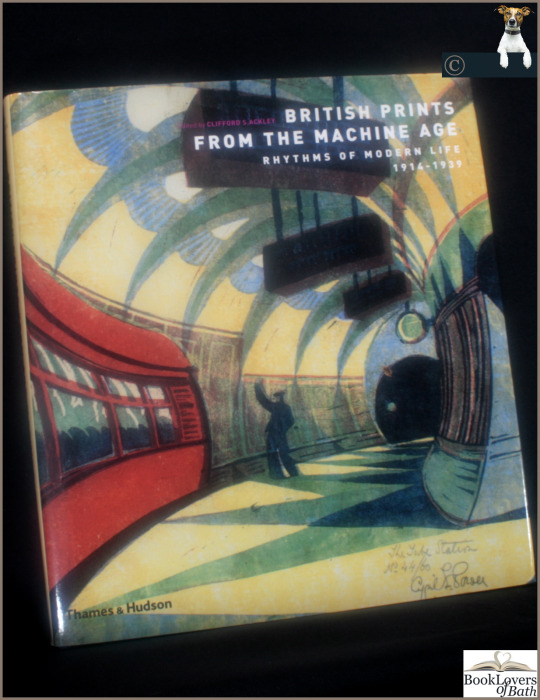
View On WordPress
#20th century prints#978-0-5002-3847-9#avant garde design#books edited by clifford s ackley#british art#british printmakers#british prints#cubism#first edition books#futurism#graphic design#historic prints#linocuts#linoleum block printing#printmaking#printmaking techniques#vorticism
1 note
·
View note
Note
Cross guild romance prompt:
When S-Hawk and S-Croc are first brought to the Guild or taken in, they both bond with their adult organic counterparts. But they actually really REALLY love Buggy.
He has that energy of Safe For Children, he's actually really really good with kiddos, especially ones with trauma. He really became the kinda person he wanted and needed when he was a lil'un. Buggy really likes kids, honestly, he just doesn't interact with them much, especially lately what with his newfound notoriety. Back in the East, at least, he could go relatively under cover and set up a circus event. Now, he's got his hands tied with options.
Crocodile and Mihawk are both surprised by this but don't particularly care. So what if the clown can make balloon animals and makes the boys actually smile and laugh? He's just a clown. Clowns do that. Whatever.
It only comes to a head when, late one evening, Mihawk goes to check on the boys when he senses a strange disturbance. Buggy beat him there. The swordsman watches from the doorway as Birdie (his own seraphim, name pending, nickname in the meantime) sits on the clown's lap, rubbing tears from his eyes. Angel (Croc's seraphim, name pending, nickname in the meantime) is wrapped up against the clown's chest. The three are in the rocking chair, Buggy holding both of the boys close, comforting them with hands in hair or petting backs. And he's singing softly to them. It's a language Mihawk has never heard before, to his knowledge. Though it DOES remind him of some of the seemingly senseless babble from Shanks when he drank far too much. He stays in the shadows, watching. Observing. Memorizing.
He refuses to acknowledge the warmth in his chest as anything other than mild heartburn.
<>
Crocodile is faced with a similar situation but very much different. It's midday for one. And there are no tears or need for comfort involved for another.
It was a cooler day, and he'd seen hide nor hair from the clown for more than a few hours. Truly, a horrific notion.
He ends up finding Buggy in the kitchen, hair in a messy bun and wearing an apron. The kids are with him as well, in oversized aprons. All three are a mess, laughing, flour and powdered sugar on her faces, aprons, in their hair. It's chaotic. It's loud. It's... happy.
Crocodile just watches for a bit, as the boys bounce and squeal over the dark chocolate and red velvet cake they made, Buggy gently walking them through piping designs. He chuckles when they make a mistake, nudges them with his hip and calls it "avant garde", waves off any concern. He's gentle with them as he guides tiny, deceptively soft little hands in loops and designs, laying out stencils and sifting powdered sugar to make shapes. It's cavity inducing.
Especially when Angel, hair held back with a headband decorated with frogs, looks up at Buggy and asks without hesitation, "Can we take some to Father and Papa, mama Bug?"
Crocodile tenses. His eyes go wide. Has the clown been coaching them, has he been-
Then he catches sight of Buggy blushing, staring wide eyed at Angel. "What did you call me, Angie?"
"Called you mama Bug. Why?"
Buggy kneels down, smiling softly despite the visible confusion. "Why did you call me that, gumdrop?"
Birdie chips in at that point, leaning to peek over his brother's shoulder. "Because you're Mama."
Buggy giggles, tucking a loose curl back. "I meant, where did you silly sweeties learn that?"
Both boys grin brightly. "Books! And that story book you read us all the time, the one with the princes and knights and dragons! Papa is the big dragon, and Father is the king!" They both turn blinding smiles at the clown. "And you're the queen! 'Cause the queen is nice and warm and fun and smart and pretty! And the queen is the princes' mama, so you're mama. Mamas are supposed to be nice and cozy and take care of us. Like you do! So you're mama!"
Buggy sniffles, smiling so fondly, so softly, it makes something in Crocodile thump roughly. He won't put a name to it. He refuses.
When Buggy cups the boys' cheeks, presses a kiss to their foreheads, the logia user turns on his heel and walks away.
<><>
Just. The seraphims up and deciding that the cross guild leaders are the parents and playing accidentally-on-purpose matchmakers. Mihawk and Crocodile angrily falling for the Clown because the introduction of children has opened a new face for him, a new perspective to view and they're so pissed about it. They don't even want to beat him up anymore. They lay awake at night thinking about him. They're so mad. They're feral.
The kids are just like "wow, our dads are dumb. We should help!"
Cue a series of absolutely wild shenanigans, and Buggy is just. So confused. Then so done. So tired. He needs a nap. Maybe an energy drink. Maybe both at once.
S-Hawk and S-Croco makes sense to bond with their adult counterparts or come to a mutual tolerance of each other. The seraphim children really REALLY love Buggy because he has that SAFE energy for kids. I like that headcanon that he’s really good with kiddos, indeed he became the person for children that he wanted when he was little bug.
Buggy must be scared of interacting with kids after becoming one of the Emperor of the Sea. Yeah, Buggy could be a ringmaster and other performers in a circus back in the East Blue.
Headcanon: Buggy can make the greatest balloon animals because why not?
Mihawk going to check on the boys and find Buggy beat him to it, the clown hugging them both and calming them both. Birdie and Angel (holy stars what cute nicknames, let me guess all three have to come to a decision on what S-Croco and S-Hawk’s names will truly be and the seraphims must agree on them) Then Buggy starts singing to them! Mihawk’s heart!
Love One Piece having different languages than the common one… Maybe the language that the clown is singing in the Wado’s original language! Or maybe Roger or another Roger Pirate could speak another language and that’s what Buggy is singing in? IDK
Crocodile facing a similar situation, but it’s happier and more fun because the kids and Buggy are making treats (When you wrote that Crocodile having seen Buggy more than a couple times and to Crocodile it was a horrifying notion… does that mean Crocodile was looking for Buggy!!!) That mafia boss finding Buggy in the kitchen with the children. Awwwwwwwwww
It’s chaotic fun for Buggy and the seraphims, and they are making dark chocolate and red velvet cake! That’s so fucking cute! Squealing and wanting to kick my feet in the air of how cute the imagines I see are!!! Buggy walking them through piping the best he can, telling them that their mistakes don’t matter, and the cake still looks amazing. Awwwwwwwwwwwwwwww
How Angel (love the headband decorated with frogs, you know that was once Buggy’s headbands or Buggy bought it for him) shocks both adults because he calls Crocodile - Father, Mihawk - Papa, and Buggy - Mama Bug! (I don't think it's only because Angel called Buggy - Mama) So, does Birdie call Mihawk - Father and Crocodile - Papa?
Crocodile thinking Buggy taught him to do that, but Buggy is as confused Crocodile is (Calling the Seraphim Gumdrop, that’s a cute nickname) Birdie agreeing with his brother about calling Buggy - Mama Bug and they learned it from books. (I read like Birdie was the one saying it, so Papa Crocodile is the big dragon, Father Mihawk being the king and Mama Buggy as the queen)
Buggy being emotional about this is so him. Crocodile’s heart thumping against his chest while Buggy is pressing a kiss on their foreheads. Going back to making the cake with Angel and Birdie as Crocodile leaves the kitchen, probably going to where Mihawk is.
Love that the seraphims are accidentally-on-purpose matchmakers and deciding the cross leaders are their parents. Love how Mihawk and Crocodile are anger that they are falling for the clown. Love that those two are lying awake and thinking about Buggy.
The kids thinking their dada are dumb and think everything will be well if they help. In the end everything was fine… but in the middle? Holy stars what did those two do? Yeah, Buggy will be needing bot an energy drink and a nap, so confused and done with what’s happening.
#one piece#cross guild#buggy pirates#buggy the clown#sir crocodile#hawkeye mihawk#s hawk#s crocodile#cross guild polycule#seraphim one piece#buggy the star clown#buggy the bombastic clown#crocodile x buggy x mihawk#buggy the genius jester#mr. 0#dracule mihawk#buggy the flashy fool#bughawk#crocobug#crocohawk#buggy#crocodile#mihawk#ideas~4~stories says#ask
124 notes
·
View notes
Text
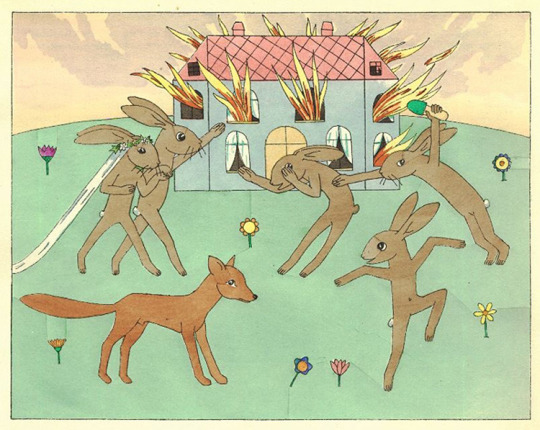
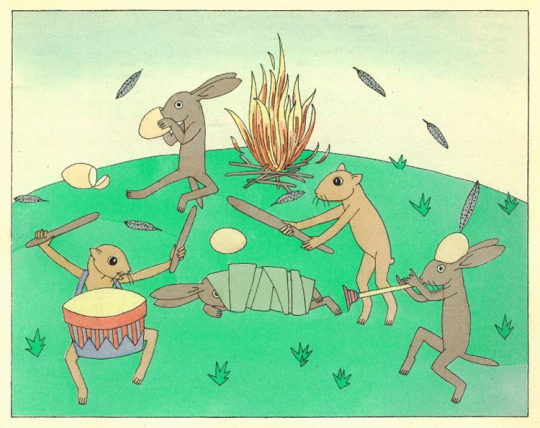
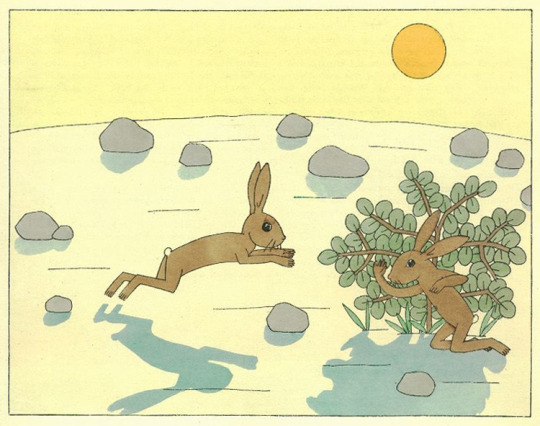
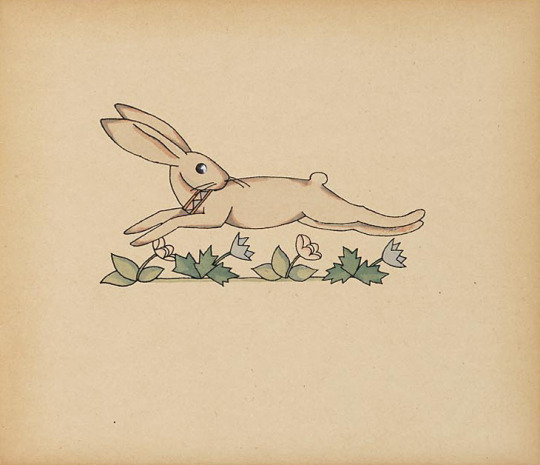
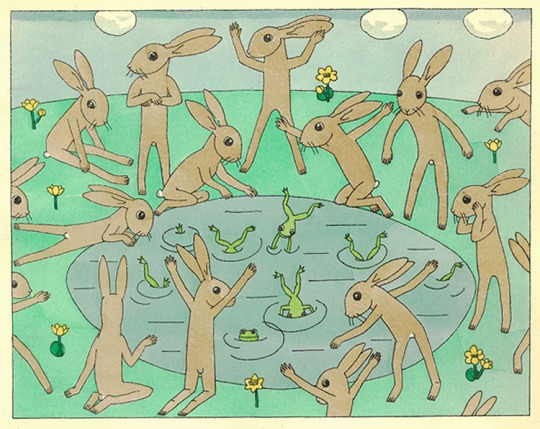
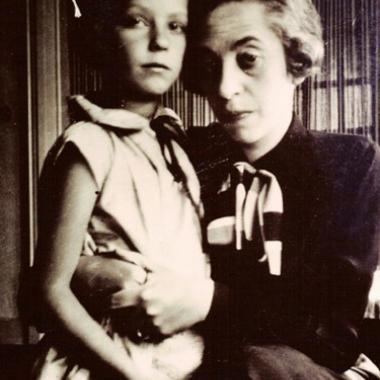
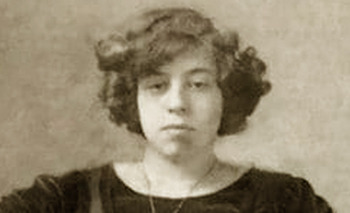
Tom Seidmann Freud (1892-1930)
Tom Seidmann Freud, nee Martha Freud, a children's book illustrator and author celebrated for her deceptively simple yet modern style. An eccentric niece of Sigmund Freud, she was born in Vienna in 1892 and moved with her family nine years later to Berlin. She was an artistically gifted child, at fifteen changed her name to Tom (allegedly to avoid sexism she might encounter as a female artist). She eventually studied art, first in London and then in Berlin and in Munich, where she focused on Art Nouveau illustration.
From 1914 to her death at thirty-eight in 1930, she published nearly a dozen books of her own and contributed illustrations to others. Today, nearly one hundred years late, her artwork looks surprisingly contemporary with its simple, folk art aesthetic and fantastical story lines about rabbit words, talking fish, and magic boats. Her illustrations are childish but not babyish, and surreal while also being thoughtful and narrative.
Strikingly fresh in its day, Seidmann-Freud's work was an example of how seriously people took children's literature as an art form. While Seidmann-Freud wrote, and illustrated her own stories, she also illustrated classical fairy tales, such as those by Brothers Rimm and Hanns Christian Andersen, in her Ten Tales for Children. She released her most well-known children's book, Die Fishreise (The Fish's Journey), in 1923.
Seidmann-Freud created her illustrations using the ancient pochoir technique that was experiencing a revival. She drew the figures, foreground, and background with ink and then overlaid watercolors using stencils. Seidmann-Freud experimented with several different kinds of children's books, including ABC books, songbooks, game books, and movable books such as Das Wunderhaus (The House of Wonders, 1927) and Das Zauberboot (The Magic Boat, 1929), subtitled "a book to Turn and Move." She also produced a series of counting books known for their typographical innovation, one of which was chosen for the Museum of Modern art's 2012 exhibition Century of the child: Growing by Design, 19000-2000, in New York.
In the early 1920s, she and her husband, writer and journalist Jakob Seidmann, founded publishing house Perergrin Verlag in Berlin. It was named after the main character in The Fish's Journey, who seeks to overcome his outsider status by escaping to a dreamlike utopia. Tragically, the demise of their publishing venture in the wake of 1929 global financial collapse led to her husband's suicide, and in 1930, to her own. (Their seven-year-old daughter, Angela, went to live with Tom's sister, the actress Lily Freud, and her husband in Hamburg, before they all moved to Prague in 1939. Angela, (Aviva) emigrated to Israel just before the outbreak if Word War II).
Seidmann-Freud died the same year that the liberal democracy in Germany, the Weimar Republic, started its frenzied downward descent. Until Hitler took dictatorial control in 1933, her work continued to receive accolades from her peers, including the legendary literary critic and philosopher Walter Benjamin. Because she was Jewish, however, by 1933 her books began to disappear.
Despite the Nazis destruction of "suspect" literature, and her untimely death, copies of her innovative children's books have survived as an important part of the history of avant-garde book-making in twentieth century Europe.
62 notes
·
View notes
Text
STANLEY MILGRAM (1933 - 1984)

Stanley Milgram was renowned for conducting a series of the most notorious and controversial experiments in the history of psychology, which were designed to explore the extent to which people would be willing to obey an experimenter's orders to administer 'electric shocks' as a form of punishment in a 'learning exercise.'
In 1963 Milgram published a number of papers documenting the disturbing finding that 65% of his subjects obeyed orders from an authority figure to inflict severe levels of pain on someone else, a finding he examined in detail in 1974 in his book 'Obedience to Authority'.
Milgram's work on obedience not only raised serious questions about research ethics but was also challenged on methodological grounds, most notably in relation to his very small sample size and the fact that the infamous 65% obedience level figure was based on just one out of 24 experimental variations. Despite this, Milgram's work still ranks among the most influential areas of social psychological research.
An avant-garde thinker, Milgram also conducted fascinating research into such things as the 'small world' phenomenon, the effects of televised antisocial behavior and the experience of living in cities."
Stanley Milgram Found that 80% of the population do NOT have the psychological or moral resources to defy an authority's order, no matter how illegitimate or legitimate the order is.
Therefore, only 20% of the people have a critical thinking capacity🤔
#pay attention#educate yourselves#educate yourself#knowledge is power#reeducate yourself#reeducate yourselves#think for yourselves#think about it#think for yourself#do your homework#do some research#do your own research#ask yourself questions#question everything#psychological warfare
63 notes
·
View notes
Text
Appreciation post: I absolutely adore how unafraid twst is in their fashion designs. Sure, sometimes they can get a bit avant garde for regular people's tastes (ex: Malleus' masquerade outfit) but they always add to the character's personality and you can visually grasp what they are as a person.
For Masque Malleus, it's that he's odd and different, but he tries his best to blend in with others so that he can rid of the "judge a book by its cover" curse upon him. For Gala Leona, it's that it's absolutely possible to relate beauty with masculinity, and that flowers and silk don't make a man any less of a man. For Groom Idia, it's that he's a lot more desirable and handsome than he gives himself credit for-- if only he would make effort to take care and cherish himself.
Their outfits full of personality really sets them apart from all other joseimuke/otome games out there. I mean most other games just rotate between suits and casual outfits you can find in uniqlo, but with twst you absolutely couldn't have guessed what kind of runway fashion they'll put on this time!
335 notes
·
View notes
Photo
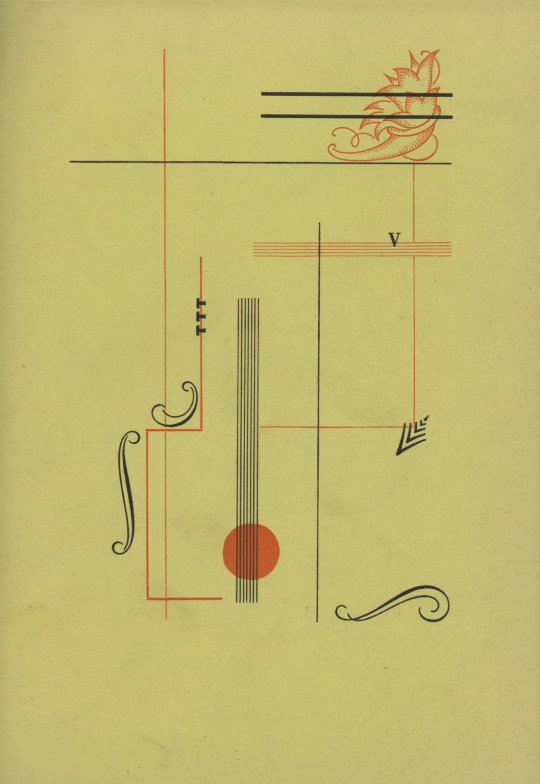
From: Konstantin Biebl, Zlom, Art/Design/Typography by Karel Teige, Odeon, Praha, 1928 [MoA-g SA – The Museum of Avant-garde, Mendrisio Borgo]
#graphic design#typography#art#poetry#geometry#letterpress#book#karel teige#konstantin biebl#odeon#the museum of avant garde#1920s
82 notes
·
View notes
Text
Pierre Bonnard - The "prophet" of Post-Impressionism
The text below is the excerpt of the book Bonnard (ISBN: 9781781608302), written by Natalia Brodskaya, published by Parkstone International.
“I agree with you that the painter’s only solid ground is the palette and colors, but as soon as the colors achieve an illusion, they are no longer judged and the stupidities begin.”– Bonnard to Matisse, 1935
Read more on Bonnard and the Nabis here.
In…
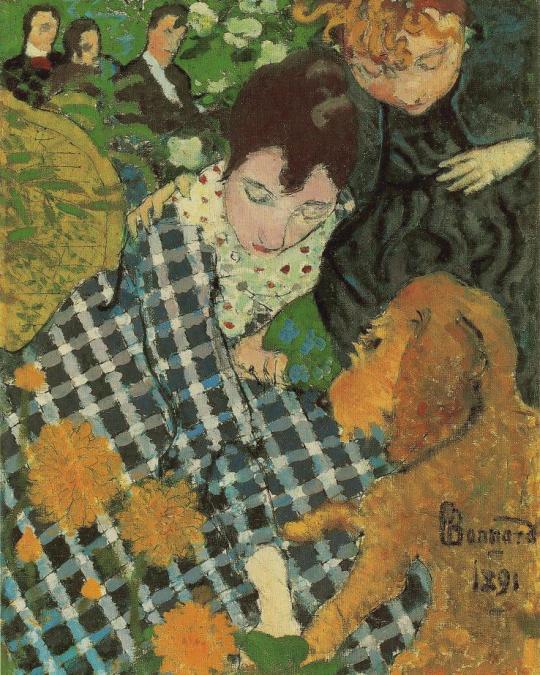
View On WordPress
#Art#avant-garde#Bonnard#book#decorative#Denis#design#ebook#french#french painter#French revolution#Impressionism#kindle book#landscapes#Matisse#Nabis#oil painting#painting#Parkstone#Parkstone International#Pierre Bonnard#pleasure#portraits#Post-Impressionism#postaday#postaweek#print#Promenade#Roussel#Scene
1 note
·
View note
Text
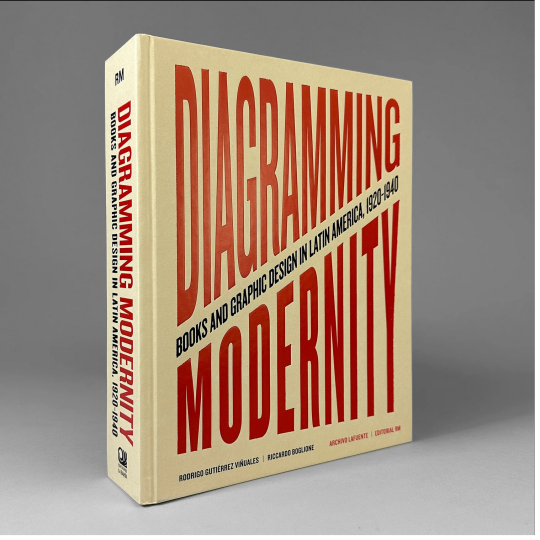


Diagramming Modernity: Books and Graphic Design in Latin America, 1920–1940
This massive publication offers the first comprehensive panorama of the Latin American illustrated book between the 1920s and 1940s, a period characterized by the region's rapid modernization. The books reproduced here encapsulate this transformative era, expressing and embodying emergent national and continental narratives in Latin American countries.
Diagramming Modernity reproduces more than 1,000 illustrated first editions, analyzing the cornucopia of cultural narratives they contain. In addition to showcasing relatively unknown work by many consecrated artists, the publication also boasts an extensive repertoire of avant-garde artists largely forgotten until today.
Chapters are devoted to countries and to specific themes such as Word-Image, Verbal Visualities, Pre-Columbianisms and Ancestralisms, and Social and Political Graphics.
Writers and thinkers Rodrigo Gutiérrez Viñuales, Riccardo Boglione, Juan Manuel Bonet, Mariana Garone Gravier and Dafne Cruz Porchini conscientiously investigate these themes and more.
Edited by Rodrigo Gutiérrez Viñuales and Riccardo Boglione
With texts by Juan Manuel Bonet, Rodrigo Gutiérrez Viñuales, Riccardo Boglione, Marina Garone Gravier, and Dafne Cruz Porchini
Designed by José Luis Lugo
Published by Editoriale RM and Ediciones La Bahía, 2023
Hardcover, 876 pages, 1500 color images, 9 × 12.25 inches
ISBN: 978-8-41-797579-1
#Diagramming Modernity#Latin American graphic design#graphic design books#books about books#Latin American visual history#Latin American graphic design history#graphic design history#Rodrigo Gutiérrez Viñuales#Riccardo Boglione#José Luis Lugo#Editoriale RM#Ediciones La Bahia#Draw Down Books
37 notes
·
View notes
Text


When Lazar Khidekel (1904-86) first met his mentor Kazimir Malevich he was a 15 year old student at the Vitebsk art school where Malevich had recently taken a teaching position. Khidekel soon became something like the master’s right hand and in 1920 also became an important member of the Malevich’s UNOVIS group as well as the successor of El Lissitzky as person in charge of the school’s architecture department. In 1923 he followed Malevich to the GINKhUK in Leningrad and in parallel studied architecture at the local Civil Engineering Institute. Khidekel wholeheartedly embraced Suprematism and translated its principles to buildings that could really be built: in 1926 Khidekel designed a Workers’ Club and 1927, while still a student, realized a Sports Club that saw him fuse the spatial ideas of Suprematism with pragmatic concerns for materials and construction methods. Unfortunately his Suprematist experiments were cut short by the rise of Stalin and his strict doctrines which forced Khidekel to resort to Classicism.
The eventful story of the architect’s life is laid out in "Lazar Khidekel and Suprematism", edited by Regina Khidekel and published by Prestel in 2014, the first ever comprehensive publication on Khidekel. The book contains a wealth of drawings that illustrate Khidekel’s transition from early Cubo-Futurism to pure Suprematism and to his Suprematist architectural projects and later works. These are supplemented with a number of essays that e.g. explore Khidekel’s work within the UNOVIS group, the cosmic dimension of Suprematist architecture and his architectural works from the 1920s and 1930s. Through the juxtaposition of insightful texts and the larger number of illustrations one gains a deeper understanding of Suprematist architecture, the towering example of Kazimir Malevich and Russian Avant-garde in general. Highly recommended!
47 notes
·
View notes
Text
Zodiac Signs, Cities & Curious Facts! 🌆
Each city was selected by me from "The Rulership Book" by Rex E. Bills, alongside one fact that matches that particular sign's energy! There are more cities and places that align with the vibration of each sign, but these are the ones I picked for this post. All pictures are from Google Images.
Enjoy this random and (hopefully) fun thread!😁
♈Aries: FLORENCE, Italy
Florence has a unique street festival: The "Calcio Storico" is a traditional street football game played annually there. The game involves four teams representing the four historic quarters of the city, and it's known for its rough and intense style of play!
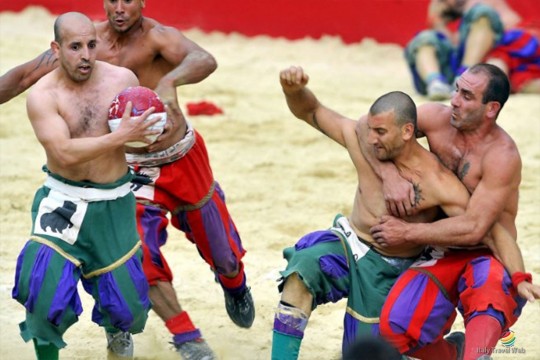
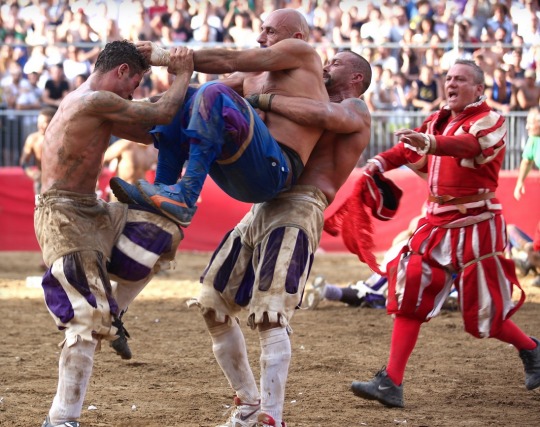
♉Taurus: LEIPZIG, Germany
Leipzig is known as the "City of Music": Leipzig has a rich musical heritage and is considered one of the world's most important cities for classical music. Famous composers such as Johann Sebastian Bach, Richard Wagner, and Felix Mendelssohn Bartholdy have strong connections to Leipzig, and their music is celebrated in the city's numerous concert halls, museums, and festivals.
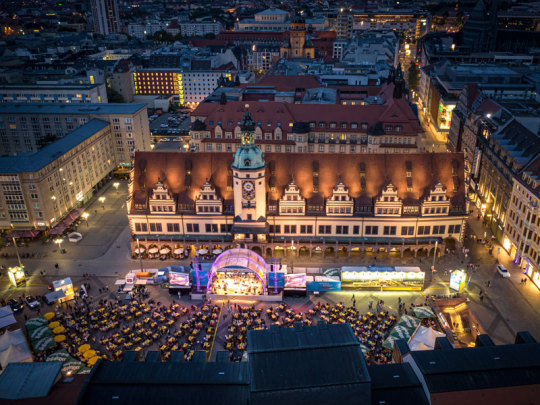
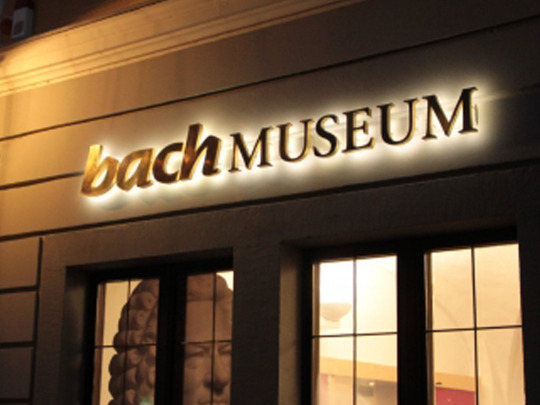
♊Gemini: LONDON, England
London has a "whispering gallery": The Whispering Gallery in St. Paul's Cathedral is a circular gallery that runs around the interior of the dome. Due to its unique acoustics, if you whisper against the wall on one side of the gallery, the sound can be heard on the other side, over 100 feet away.

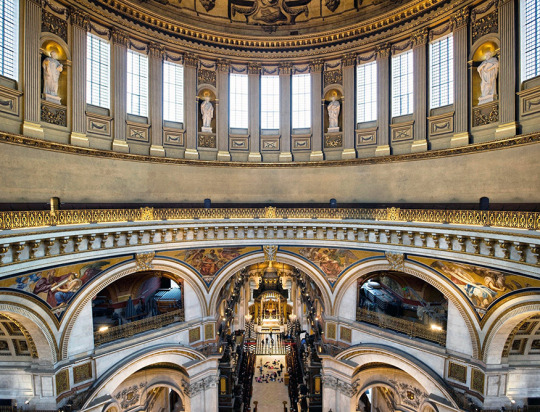
♋Cancer: ISTANBUL, Turkey
Istanbul has a famous street for cats: The "Cat Street" or "Kedi Sokak" in Turkish is a narrow street in the historic district of Sultanahmet that is home to dozens of stray cats. The cats are well-fed and cared for by locals, and the street has become a popular tourist attraction.
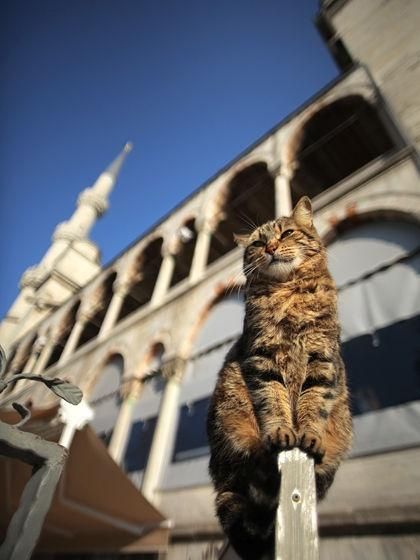

♌Leo: BERLIN, Germany
Berlin is a graffiti artist's paradise: The city has a long history of street art and is home to some of the most famous graffiti murals in the world. The East Side Gallery, a section of the Berlin Wall that has been turned into an open-air gallery, features over 100 paintings by artists from around the world.
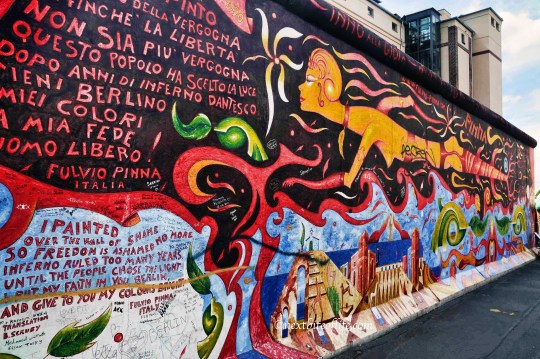
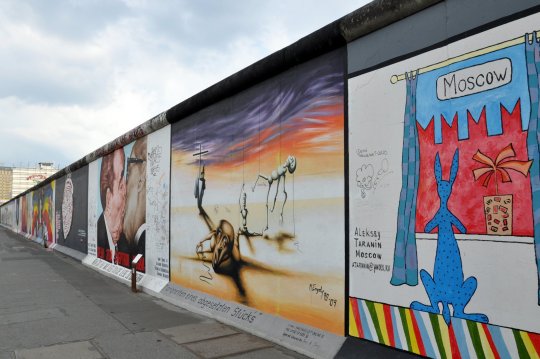
♍Virgo: MOSCOW, Russia
Moscow has a rich literary history: Many famous Russian writers, including Leo Tolstoy, Fyodor Dostoevsky, and Anton Chekhov, lived and worked in Moscow. It also has the largest number of public libraries in the world: "The Russian State Library" , which is the largest library in Europe and the second largest library in the world, after the Library of Congress in the United States.


♎Libra: VIENNA, Austria
Vienna has a rich musical history: Vienna has been a center of musical innovation and creativity for centuries and has been home to many famous composers such as Mozart, Beethoven, and Strauss. Today, the city is renowned for its classical music scene and is home to the world-famous Vienna Philharmonic Orchestra.


♏Scorpio: TOKYO, Japan
Tokyo has a unique fashion scene: Tokyo's fashion scene is known for its avant-garde and eclectic styles, with Harajuku being the center of youth fashion culture. "Gothic Lolita" is part of Harajuku, and it incorporates darker and more macabre elements into the Lolita fashion aesthetic.

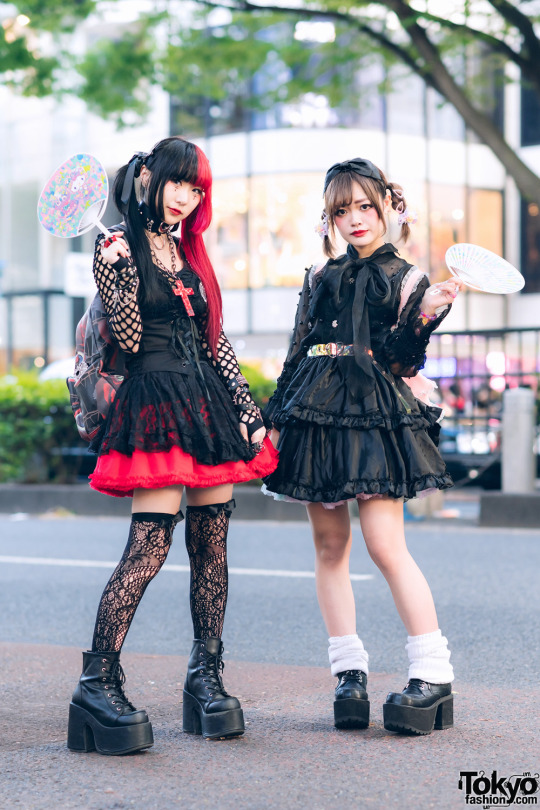
♐Sagittarius: TUSCANY, Italy
Tuscany is home to the oldest university in Europe: The University of Bologna, which is located in Tuscany, is the oldest university in Europe, having been founded in 1088. It is still one of the most prestigious universities in Italy.
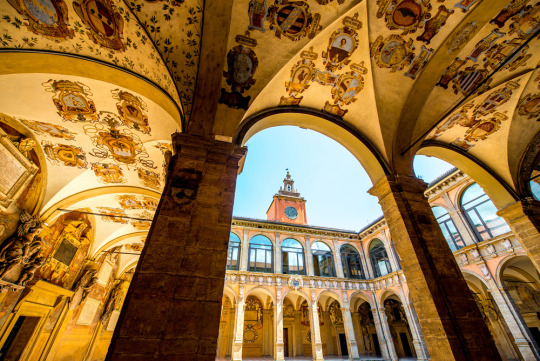
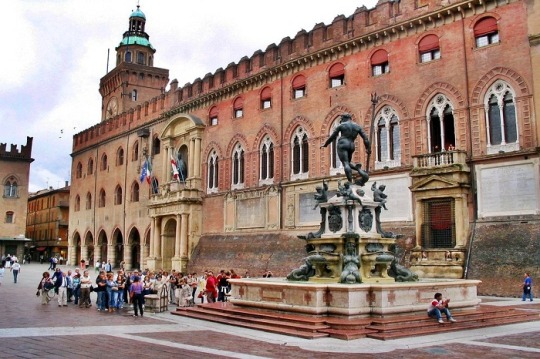
♑Capricorn: BRUSSELS, Belgium
Brussels is home to the "Atomium": The Atomium is a unique architectural structure in Brussels that was built for the 1958 World Exposition. It is designed to represent an iron crystal magnified 165 billion times, and it has become an iconic symbol of the city.


♒Aquarius: LOS ANGELES, California
LA is the birthplace of the Internet: The first successful transmission of a message over the Internet occurred on October 29, 1969, between two computers located at the University of California, Los Angeles (UCLA) and the Stanford Research Institute. This event is considered the birth of the Internet.


♓Pisces: GALICIA, Spain
Galicia is home to an ancient spiritual destination: The Way of St. James, also known as the Camino de Santiago, is a famous pilgrimage route that leads to the cathedral of Santiago de Compostela in Galicia. Every year, thousands of people from all over the world make the 780 km journey on foot, bicycle, or horseback. Many of them walk the route for spiritual reasons, while others enjoy the physical challenge and the opportunity to meet people from all over the world.


Now, that was a pleasure to put together! How do you feel about the fact/city for your sign? As a Virgo, I'd love to visit the Moscow library, but as a weird/edgy fashion sucker, Tokyo seems like a whole lot of fun! Also, the Aries one made me LOL! Y'all just can't stop fighting, can you? 😂
Which fact/city is your favorite one(s)? Let me know down below! 🖤
- Foxbörn
ᴍᴀꜱᴛᴇʀʟɪꜱᴛ 1
ᴄʜᴀʀᴛ ʀᴇᴀᴅɪɴɢꜱ
ᴡᴀɴᴛ ᴛᴏ ʙᴜʏ ᴍᴇ ᴀ ᴄᴏꜰꜰᴇᴇ?
#astro notes#astrology#astro observations#astrology notes#birth chart#zodiac#astro community#zodiac signs#horoscope#aries#taurus#gemini#cancer#leo#virgo#libra zodiac sign#scorpio#sagittarius#capricorn#aquarius#pisces#travel
134 notes
·
View notes
Text
Wizard School Mysteries: Dance Clothes!
Book 1 of Wizard School Mysteries had a big fancy dance, and book 2 had a scene where our heroes went on a bar crawl that ended in the vaguely medieval fantasy land equivalent of a dance club. And I designed alternate outfits for my main characters to use in both these scenes, because there is something wrong with my brain.


James's Samhain outfit is excessively fancy, taking a lot of fashion from princes and nobles, so show that Rodrigo really worked hard to make James feel like he was equal with everyone else despite being a commoner. His clubbing outfit, by contrast, is meant to have a swashbuckler vibe to it, and his trickster animal motif is on display with a raven on his pauldron and a serpent/basilisk on his patch.
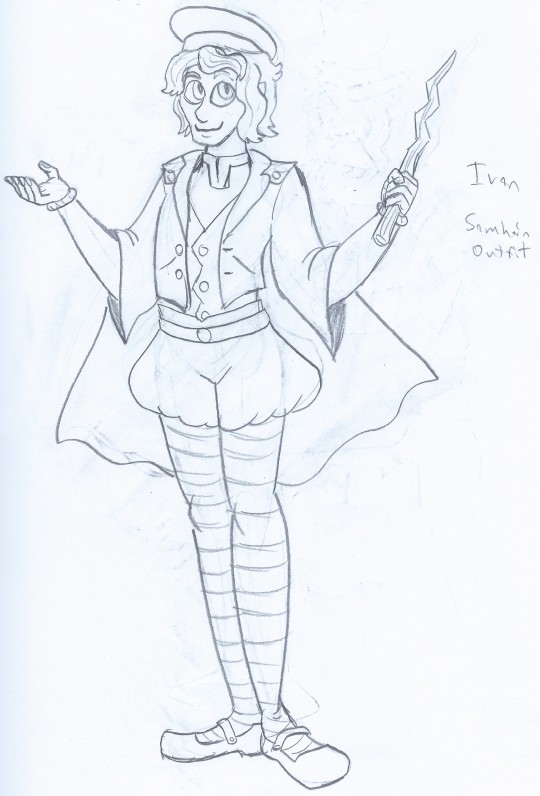
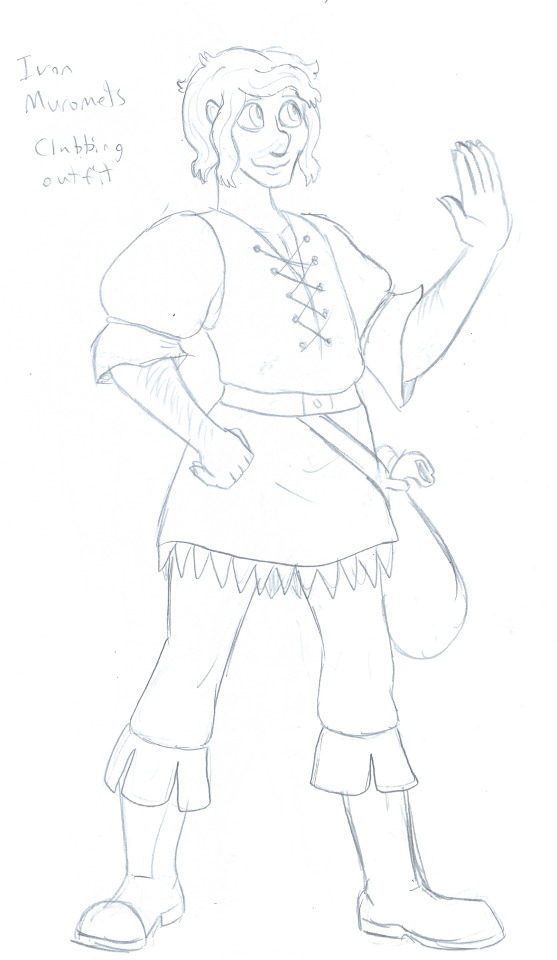
Now you know what I meant when I said Ivan was in hot pants in book 1. His clubbing outfit is also meant to be a swashbuckler, just a more "dated" version - 50's fantasy rather than modern D&D fantasy.

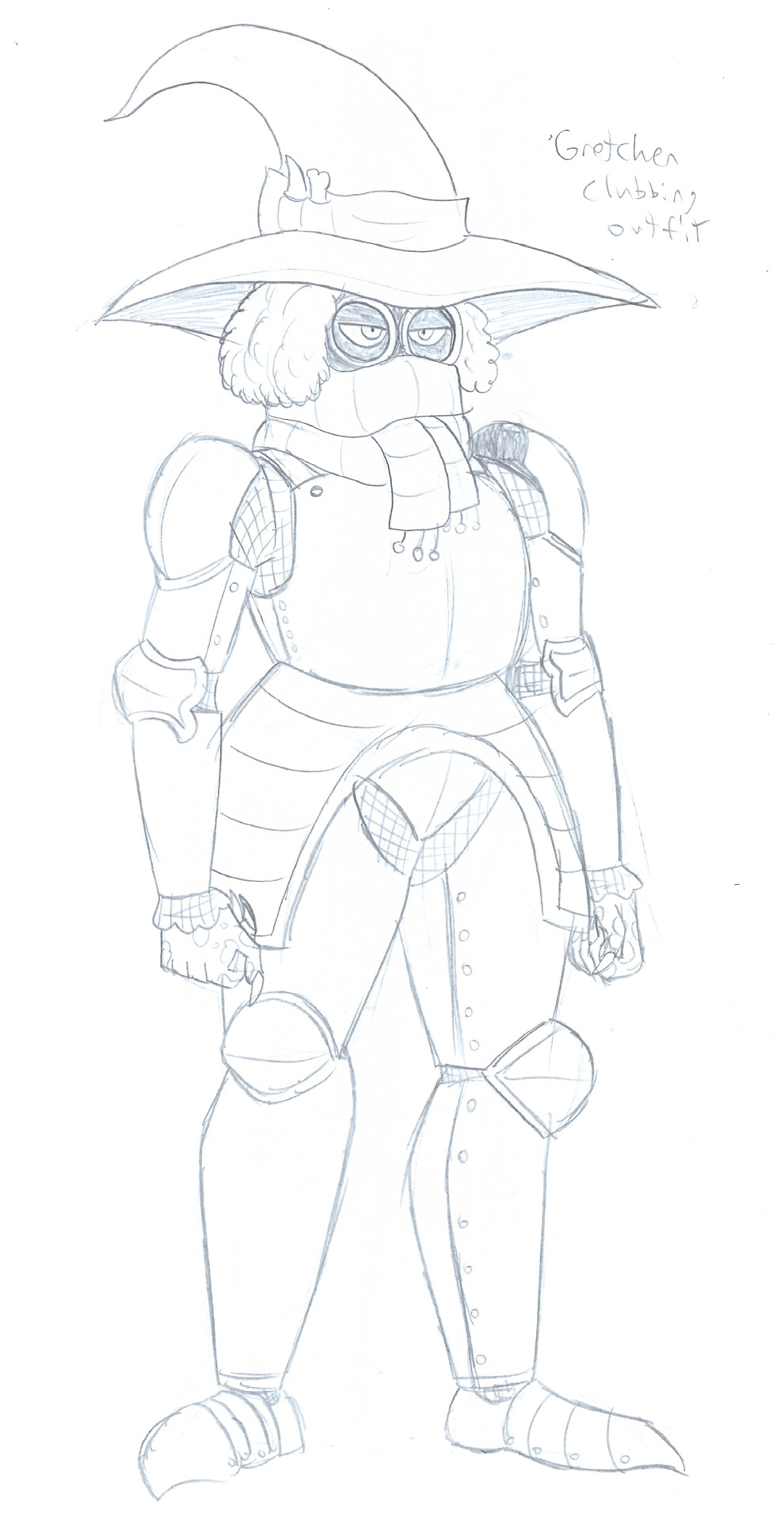
I knew Gretchen wouldn't be allowed to wear her hat in a big fancy dance, but I still wanted to keep her face shrouded in shadow for Story Reasons, so I went with a really elaborate veil based on some I saw when looking up medieval noblewomen's fashion. Her clubbing outfit, by contrast, is her fully taking the piss out of everyone while wearing her trademark hat.
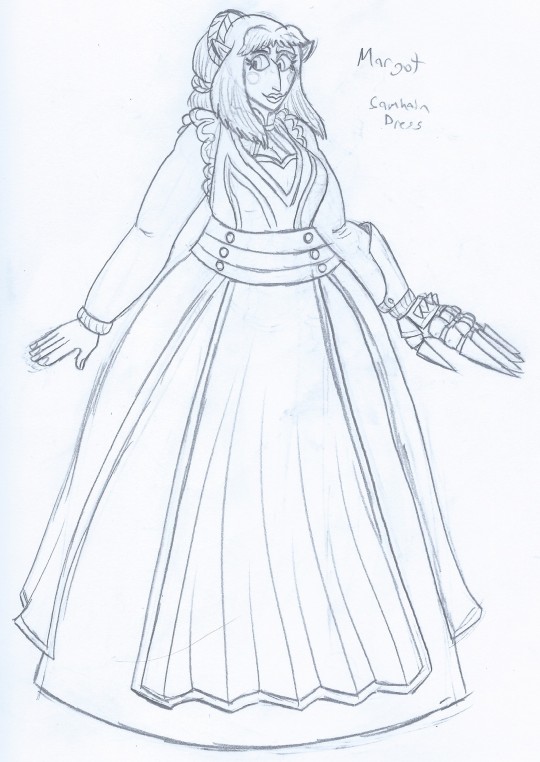
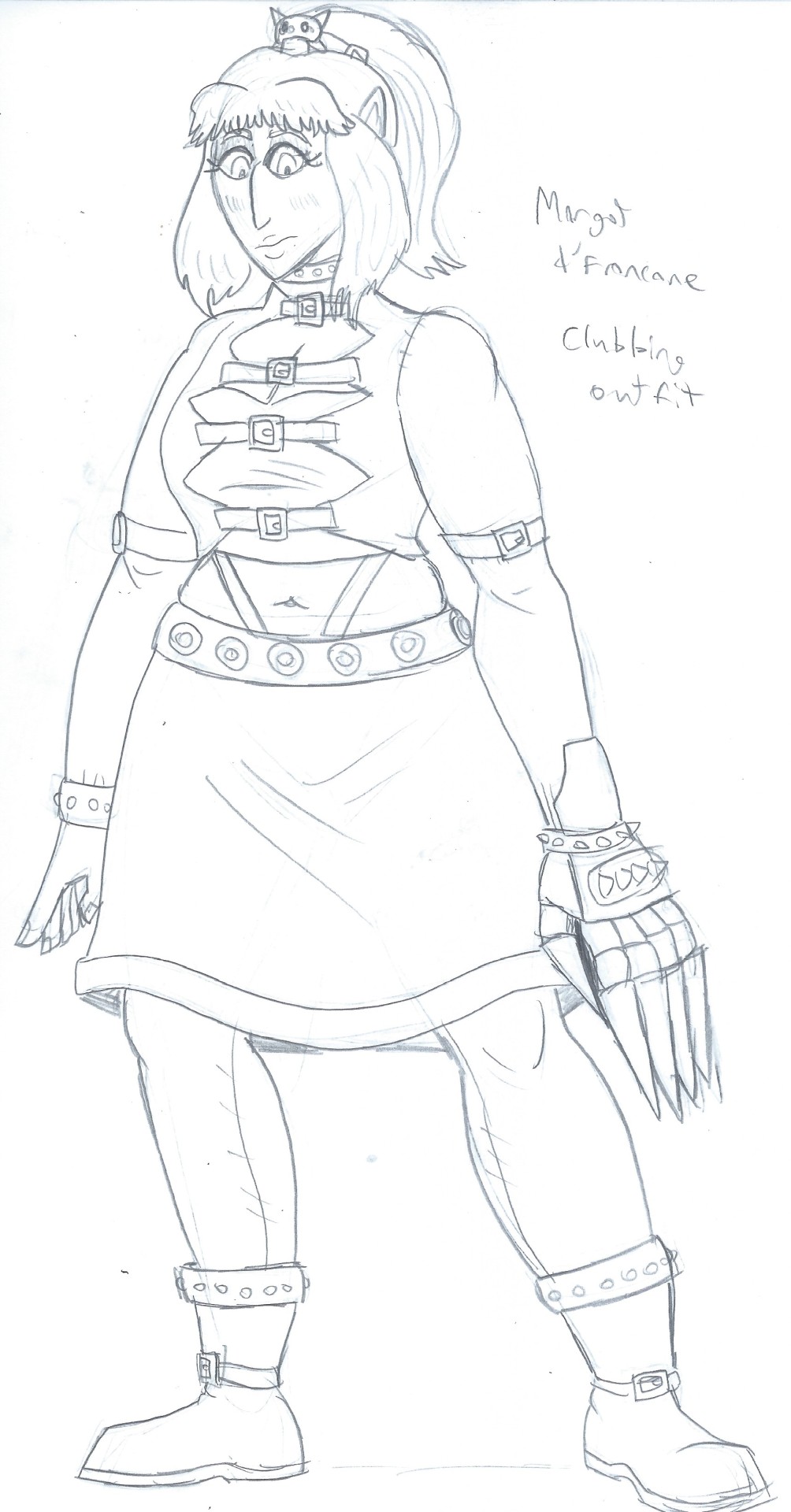
Margot's dress for the fancy dance is one of the more modern, taking a few more explicit cues from prom dresses while still mixing in some old timey design elements. Her clubbing outfit... look, I'm not making excuses, you know what I'm about.
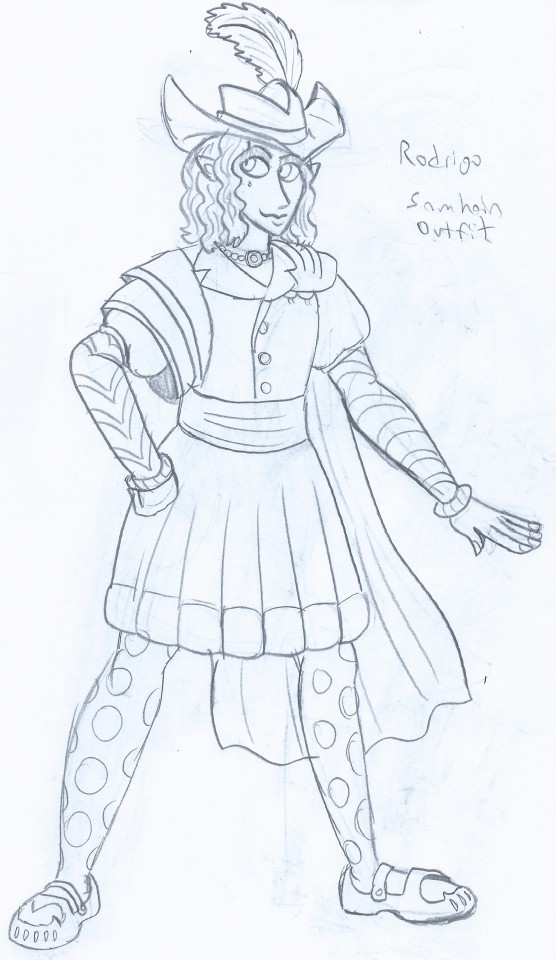

Rodrigo's fancy dance outfit has a lot of elements I found in medieval/renaissance fashion that I think would be "avant garde" in modern fashion - lots of asymmetry specifically. Rodrigo's gotta look both rich and kinda artsy. His clubbing outfit is based on various Red Mage designs from Final Fantasy, because goddamn do Red Mages have good fashion sense.
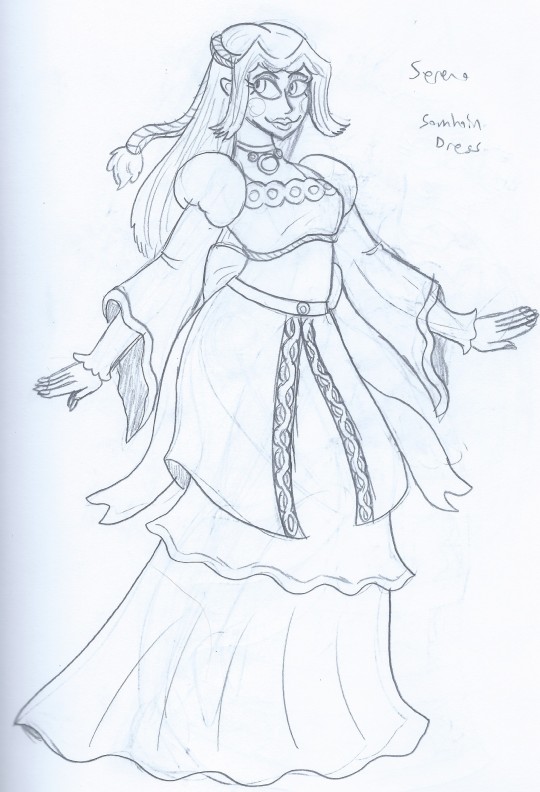
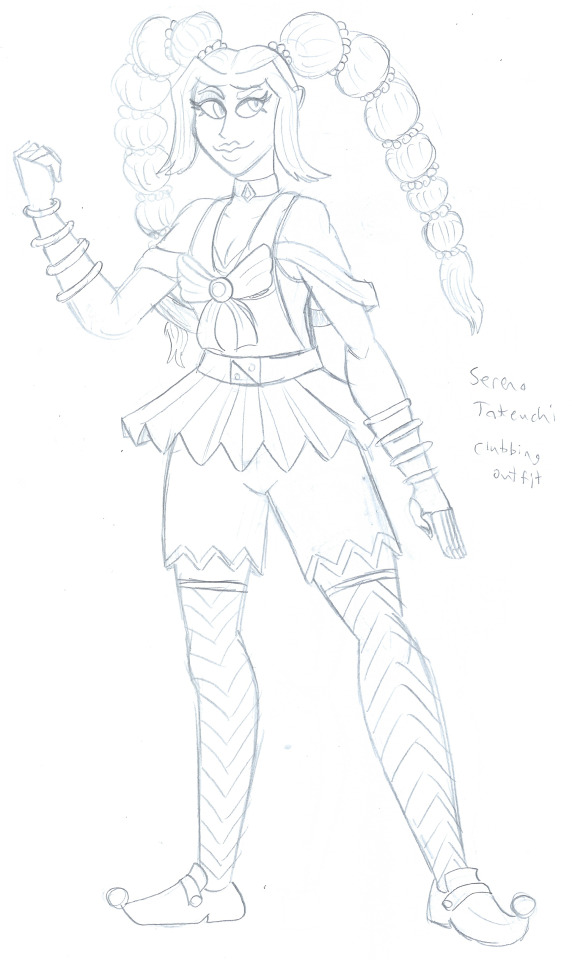
Serena's fancy dress is based on one worn by Sailor Moon with a few Celtic touches worked in. Her clubbing outfit is, like, "what if Sailor Moon went to a rave" I guess, just a bit obnoxious to fit her behavior in the "A Needleslly Gendered Night Out" chapter.
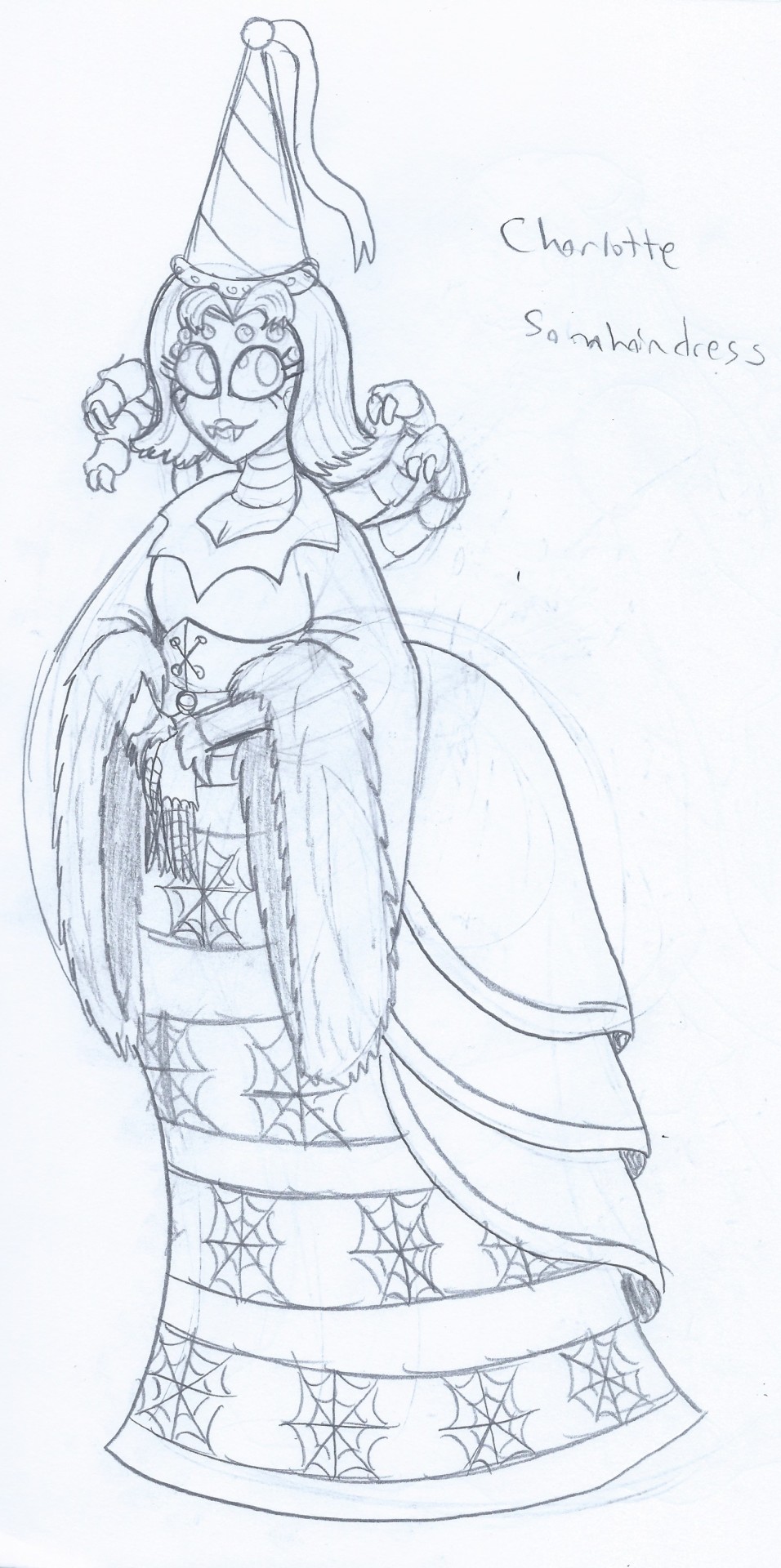

Charlotte's fancy outfit really tries to emphasize her spider bits while also making her a cute little princess, because juxtaposing cuteness and spidery-ness is a big part of her character. Her clubbing outfit is pretty normal as wizard clothes go, with the bulk of my design work focusing on figuring out what Charlotte's human guise looks like.
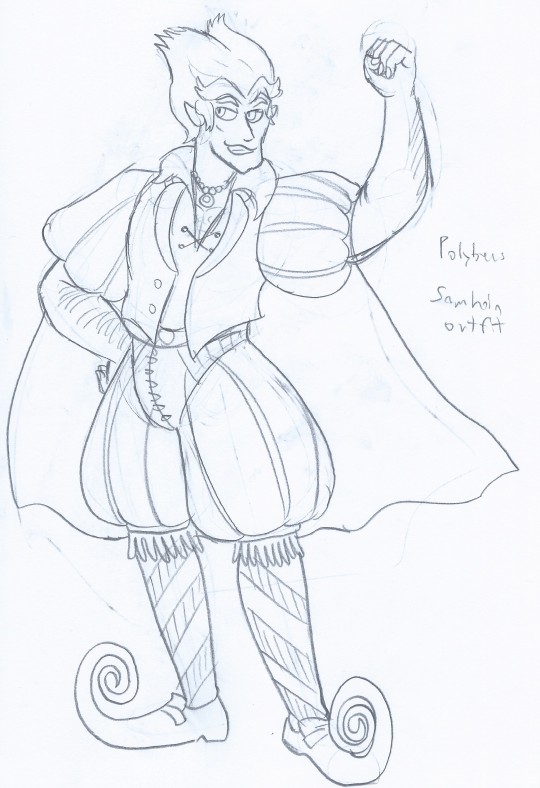
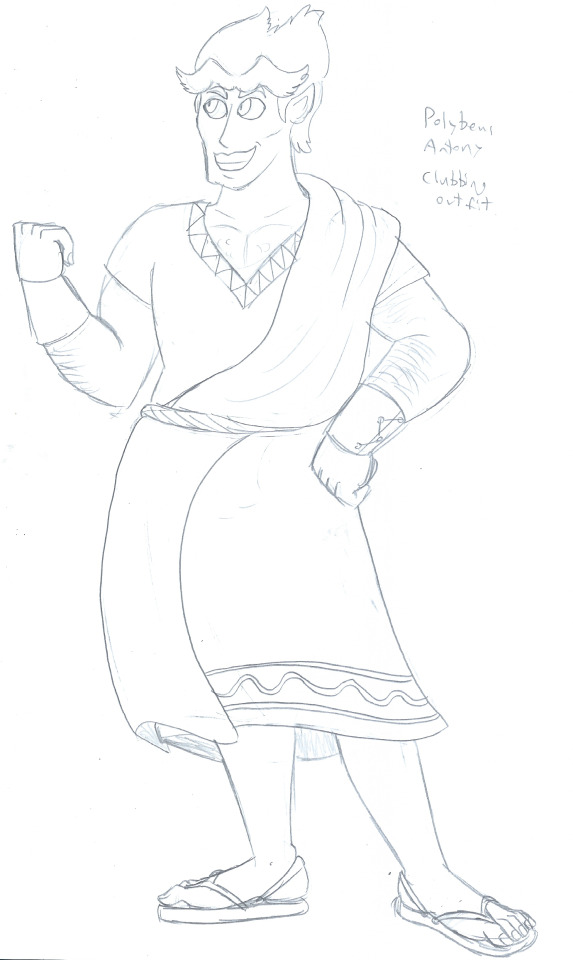
Polybeus didn't actually appear in the dance scene in book 1, but I made him an outfit anyway. It's not like it's the ONLY dance scene the series will ever have. His clubbing outfit is a play on the college movie trope of guys running around in togas - I have no idea if actual real life frat bros do this, but they certainly do it in movie a lot.
Next and final post for now: shenanigans!
13 notes
·
View notes
Text

Ter-Gevondyan T.R. "Conversation" 1962. GZ23 Cardboard, tempera.
Tamara Rubenovna Ter-Gevondyan
(1908-2000)
Professional painter, received higher art education in Vkhutemas-Vkhutein, studied with Lev Bruni and Konstantin Istomin. Since the 1930s, she has worked as an artist in the field of animation and television cinema, and also acted as a theorist (co-author of several books and articles devoted to the problems of visual solution of the film). Ter-Gevondyan worked as a production designer on the set of G. Shengelia, M. Kalatozov, the most independent directors of that time. In 1958, she came to Elia Belyutin's New Reality studio. Together with the New Reality studio, it passed all the milestones of its development, ban and relocation, did not miss a single exhibition in Abramtsevo from 1964 to 1992.
Participant of the I exhibition of Russian abstractionists - Taganskaya ( 1962 ) and the first avant-garde exhibition in the Manege ( 12.1962).
Art Molotov
10 notes
·
View notes